Cheap vs. expensive — Is a premium-priced tempura bento really worth it?【Taste test】

A bento from a fast food joint versus one from a luxury hotel.
Fried food often gets saddled with the image of being cheap, greasy eats, but tempura is an exception. In classical Japanese cuisine, it’s considered quite the delicacy, and a meal at a high-end tempura restaurant can run just as much as you’d pay at a sushi or sukiyaki specialist.
That said, you can find affordable tempura in Japan too, often for a fraction of a price of the more expensive stuff. For example, fast food chain Tenya serves up a perfectly tasty Tendon Bento (tempura and rice boxed lunch) for just 500 yen (US$4.35).
▼ A Tenya branch
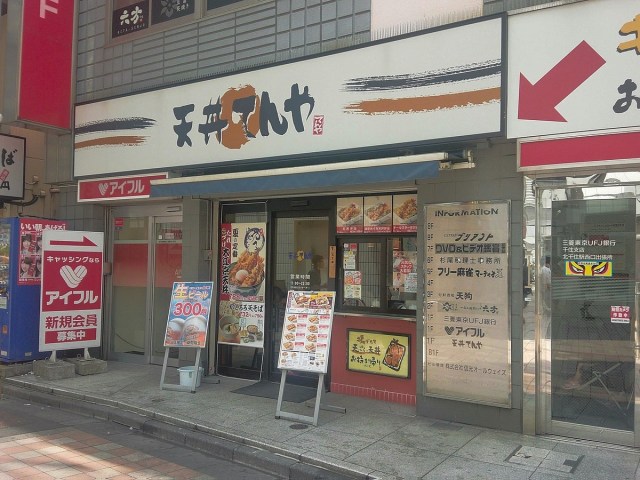
▼ Tenya’s Tendon Bento
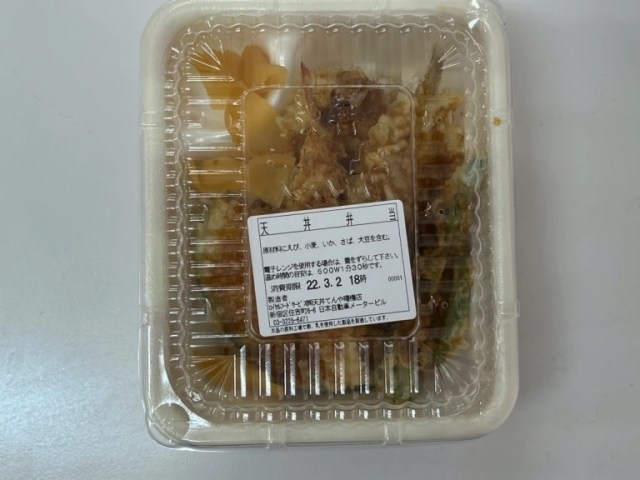
Meanwhile, on our last trip to swanky department store Isetan in Tokyo’s Shinjuku neighborhood, we came across a tempura boxed lunch made by Yama no Ue, a Tokyo luxury hotel with its own tempura restaurant, priced at 3,780 yen (US$32.90).
▼ The Yama no Ue Tokusei Tenju (Special-grade Tempura and Rice)
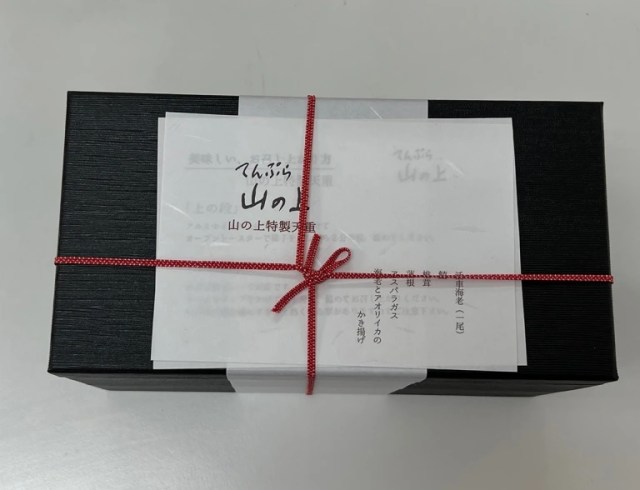
So basically for the same price as just one expensive tempura lunch, you could eat the less-expensive one every day for an entire week, plus still have some change left over to put towards some sakura sweets for dessert. Curious to see what, if any, difference there actually is between the two other than price, our Japanese-language reporter Yuichiro Wasai decided to buy both and find out for himself.
Let’s start with the visual comparison. Pictured on the left is the expensive Yama no Ue tempura, and on the right is Tenya’s much, much cheaper one.
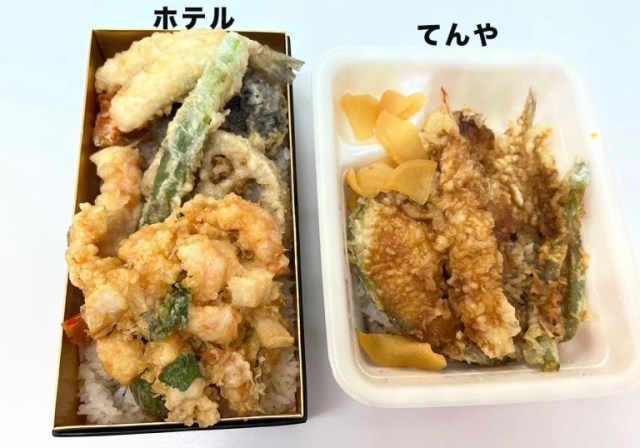
You’re probably thinking the presentation looks a little nicer for the Yama no Ue lunch, but that’s actually Yuichiro’s doing. Yaman no Ue’s tempura bento comes in a two-layered box, with the tempura in one section and the rice in another, and the above photo is how it looked after Yuichiro himself transferred the tempura to the rice.
▼ Here’s how it looked when he first opened the box.
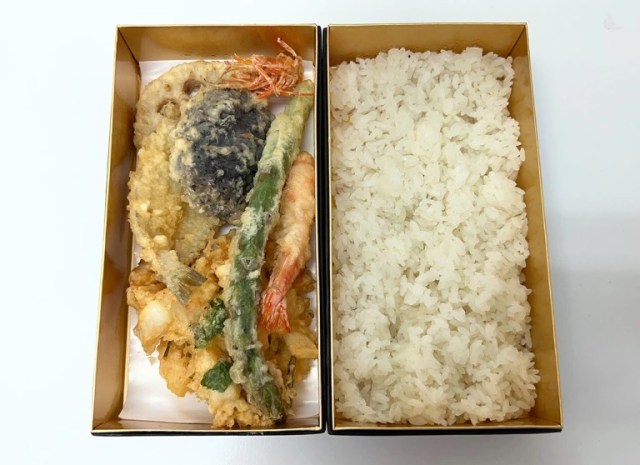
Some people might think having to transfer the tempura themselves is a pain, but it also makes it easier to heat everything up if it’s gotten lukewarm on your way home, since the tempura and rice have different optimal procedures (Yama no Ue recommends warming the tempura itself in a toaster oven, and the rice in a microwave). Yama no Ue keeping the rice and tempura separate is also a plus since they give you a container of tsuyu (tempura sauce) to add to taste right before you start eating, whereas Tenya pours it on before giving you your food, which can make it a little soggy if a long time passes between purchasing and eating.
▼ Yama no Ue’s tsuyu
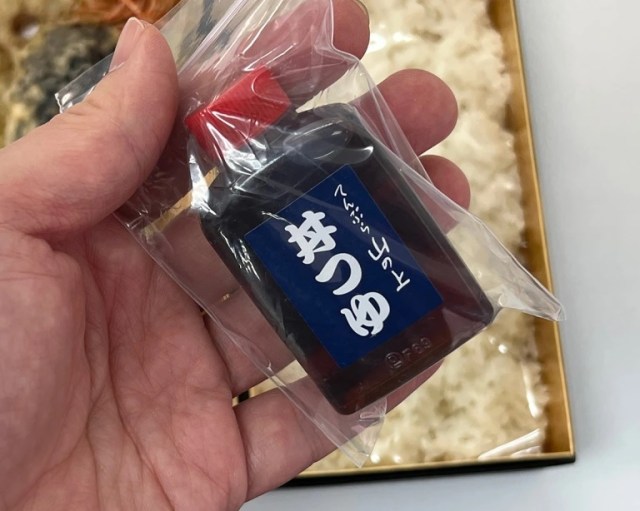
As for what exactly you get in each bento, there’s some overlap, with both giving you a shrimp and slice of whitefish.
▼ Yama no Ue (left) and Tenya (right) shrimp
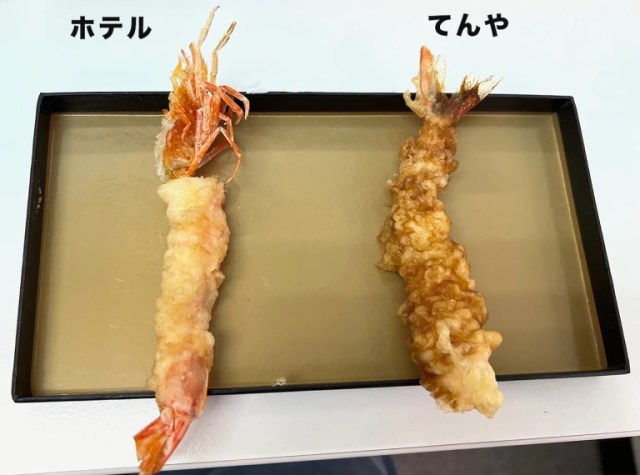
The actual size of the shrimp was surprisingly similar. The Yama no Ue one, though, is straighter and its breading smoother. In contrast, Tenya’s shrimp had curled slightly during cooking, and there’s more bubbling in the tempura coating. Which looks nicer is really a matter of personal aesthetic taste, and the differences don’t really affect the flavor. However, when Yuichiro bit into them, he found the Yama no Ue tempura started with a firm outer layer to the shrimp that gave way to an immensely pleasing, moist snap at its core, making it the much more satisfying texture.
Things were similar with the whitefish. Their sizes were about the same, but Yama no Ue’s had an extra nice airiness to how its breading had cooked up.
▼ Yama no Ue (left) and Tenya (right) whitefish
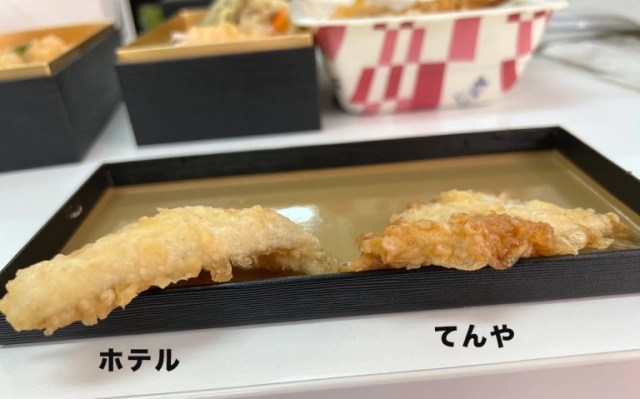
From here, the ingredients diverged. The other tempura players on Tenya’s team are squid, kabocha (Japanese pumpkin/squash), and green beans, all budget-conscious overachievers. Yama no Ue, though, goes with premium with shiitake mushroom.
▼ Yama no Ue’s shiitake
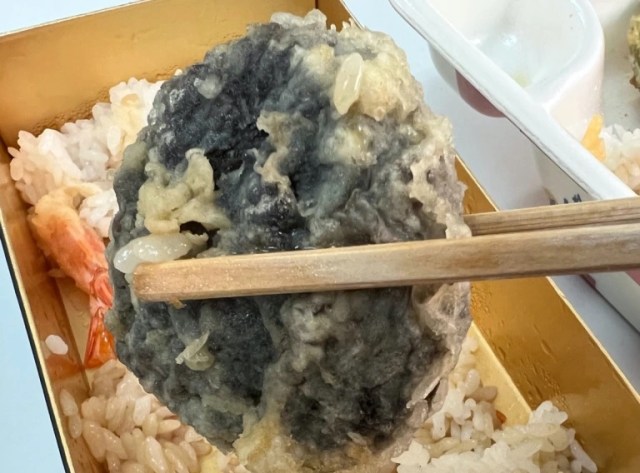
Yama no Ue also gives you renkon (lotus root), asparagus, and kakiage, a cluster of mixed tempura, with large pieces of sliced shrimp ad squid.
▼ Yama no Ue’s kakiage
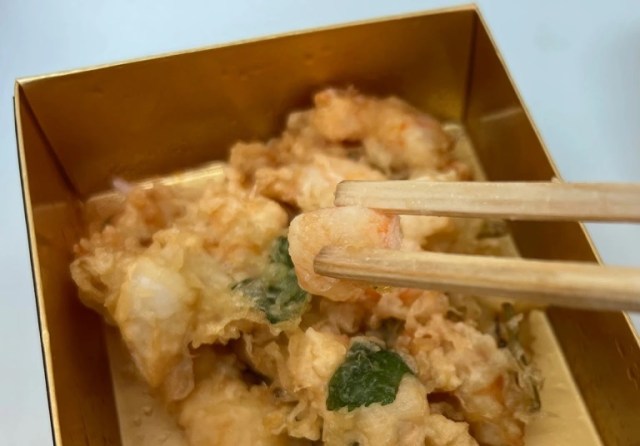
So overall, which did Yuichiro think tasted better? “The Yama no Ue tempura, and it’s not even close,” he said with a satisfied smile and full stomach.
However, that’s not to say that the more expensive tempura bento is the better tempura bento. Yuichiro himself is quick to point out that he’s a big fan of Tenya’s super affordable tempura too, and if you, like us, aren’t in a position to splurge on 3,780-yen lunches every day, Tenya will take care of your finances and tempura cravings quite nicely.
But on special occasions, when you want a little edible luxury? Then Yuichiro thinks treating yourself to the more expensive tempura is money well spent.
Top image: SoraNews24
Insert images: Wikipedia/Lombroso, SoraNews24
● Want to hear about SoraNews24’s latest articles as soon as they’re published? Follow us on Facebook and Twitter!
Credit:

0 comments: